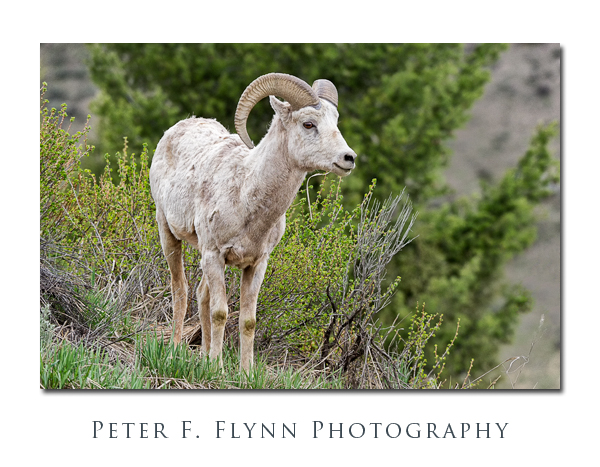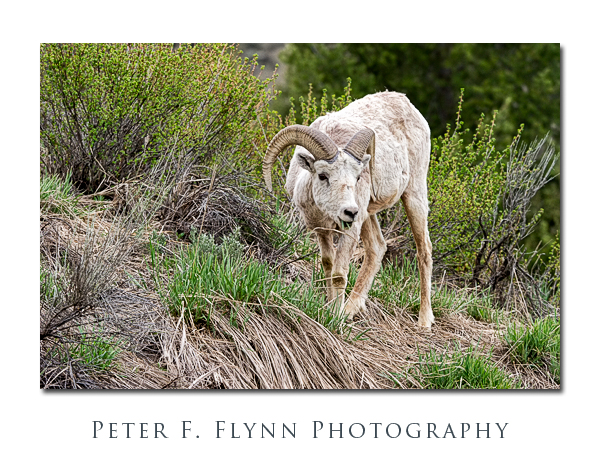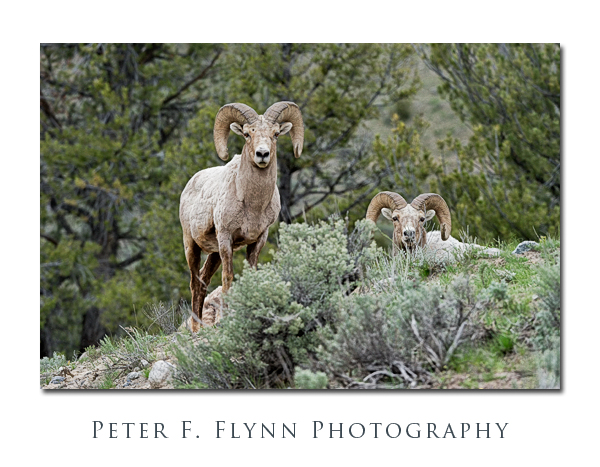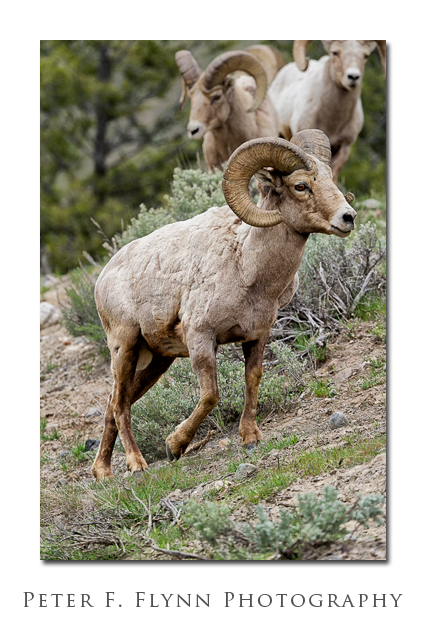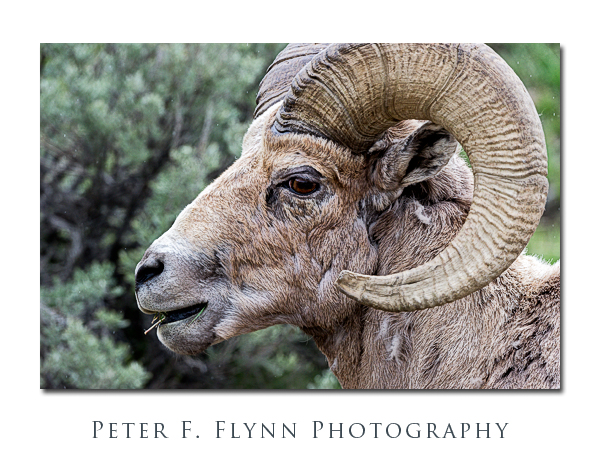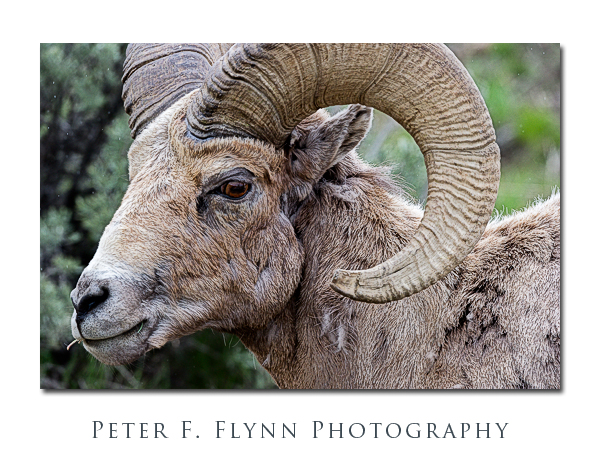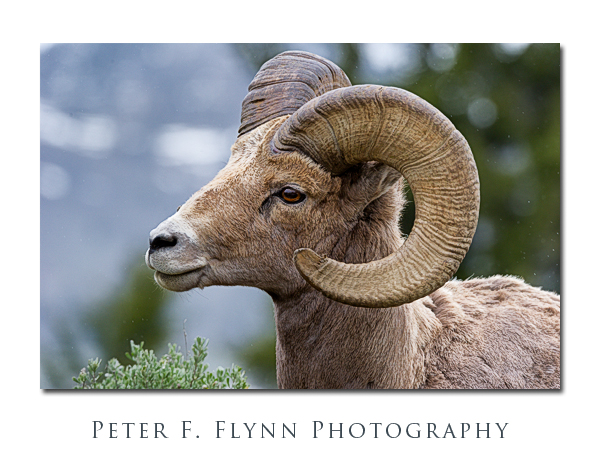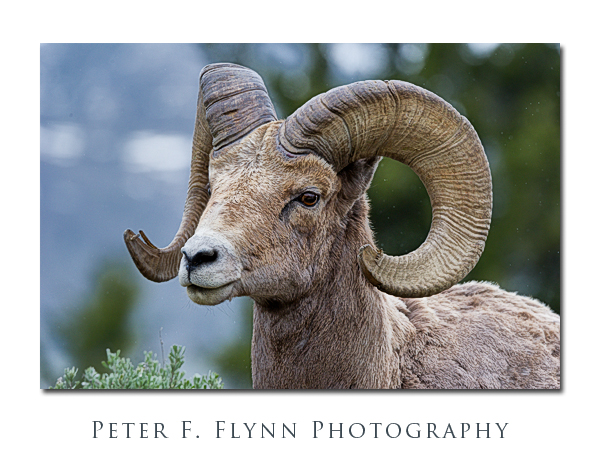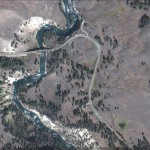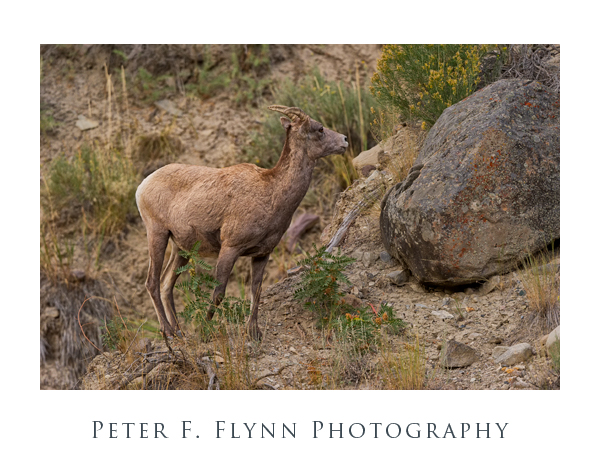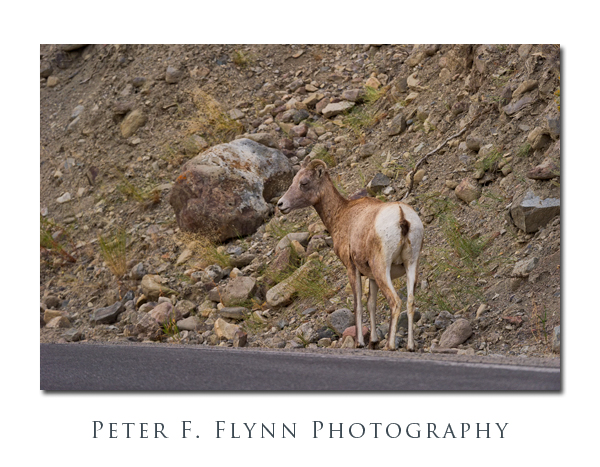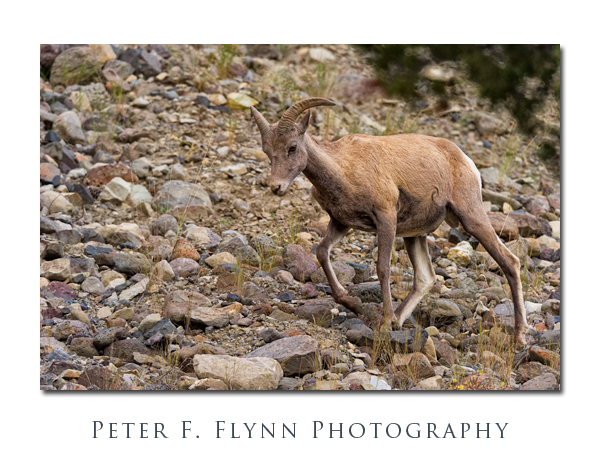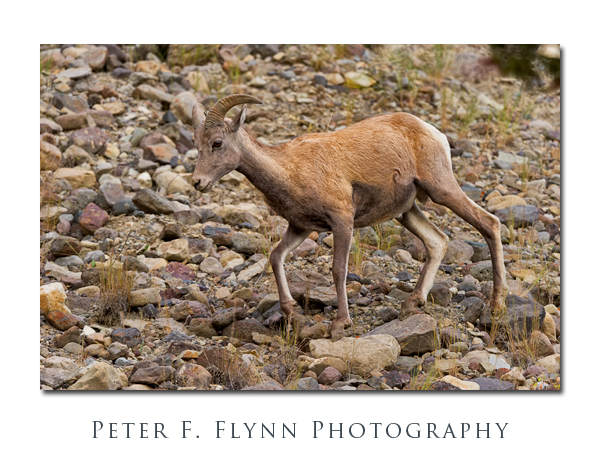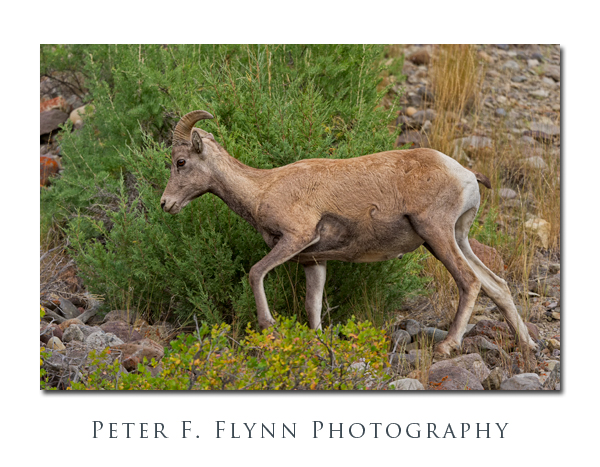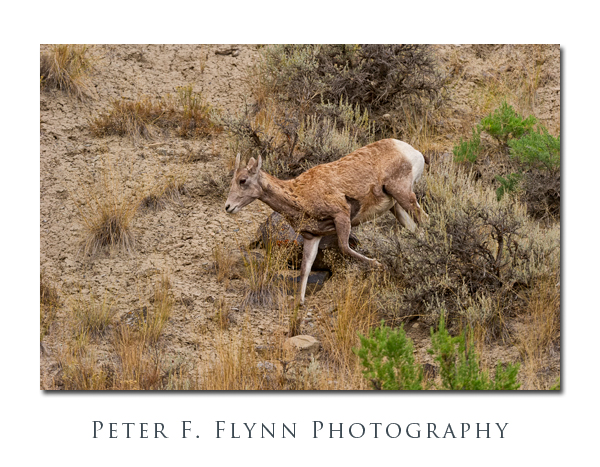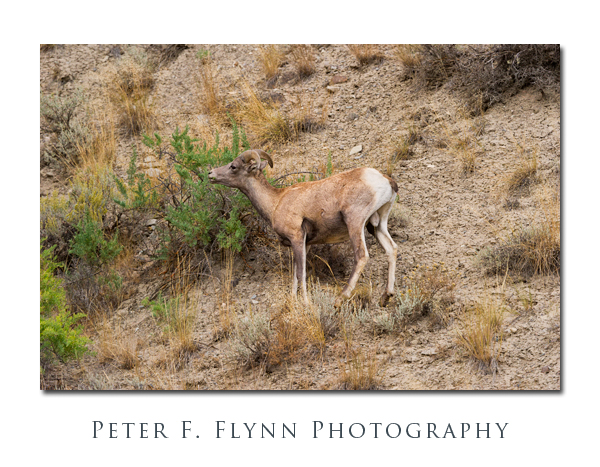The most common question asked of rangers in Yellowstone National Park? Number one would definitely have to be ‘Where can we see _______? The most popular fill-in-the-blanks being bear and wolves in that order (or perhaps the reverse), with bighorn or moose vying for position three.
If the blank gets filled in with bighorn, then the answer invariably is ‘Yellowstone Picnic Area’. Not only is this one of the most popular picnicking spots in Yellowstone, but it is also the most popular location from which to view bighorn sheep. The site; which is properly known as the Yellowstone River Picnic Area, is located about 1.2 miles east of Tower Junction along the NE Entrance Road, and has nine tables and a restroom (separate M/W, pit type).
The location is the big seller here – as the name of the site indicates, it is located next to the Yellowstone River at a point where the river emerges from deep canyon walls in more open terrain. One can walk south about 0.1 mile, ascending higher ground to a river overlook, or walk westward down-slope to gain river access after about 0.3 miles. Alternatively, although not technically part of the picnic area, there is a parking area just above the river at a point approximately 0.3 miles west of the picnic area (or 0.9 miles east of the Tower Junction) that provides easy access.
Images in this entry were recorded on May 20, 2011, at 13:00 MDT, using the Nikon D3s and the AF-S NIKKOR 200-400mm f/4G ED VR II lens at various focal lengths. Exposures were all at f/8.0, with shutter speeds in the 1/1000s range, and with ISO values near 1250. I would generally make an effort to shoot big game animals using an aperature of f/5.6, e.g., to isolate the subject from the background. However, as this group was moving around quite a bit, I was a little worried about the subjects passing out of focus before I could get the shot off and worked at f/8.0. Also, the background in most of the shots shown here was sufficiently far off that I though it would be out of focus at f/8.0 anyway.
Capture, creative, and output sharpening was applied using Photokit Sharpener 2. Images were converted using ACR 6.6. Processing consisted of curves adjustments to the red and green channels to enhance contrast, followed by additional contrast, saturation and microcontrast (Structure) enhancement using Nik Viveza 2, and Tonal Contrast adjustment using Nik Color Efex Pro 4.
A google Earth image of the Yellowstone River Picnic Area appears below:
Note that the picnic area is located just a bit low of the center, where a couple of vehicles are visible. The parking area is located a bit high of center, where there appears to be a single vehicle parked.
Copyright 2012 Peter F. Flynn. No usage permitted without prior written consent. All rights reserved.
